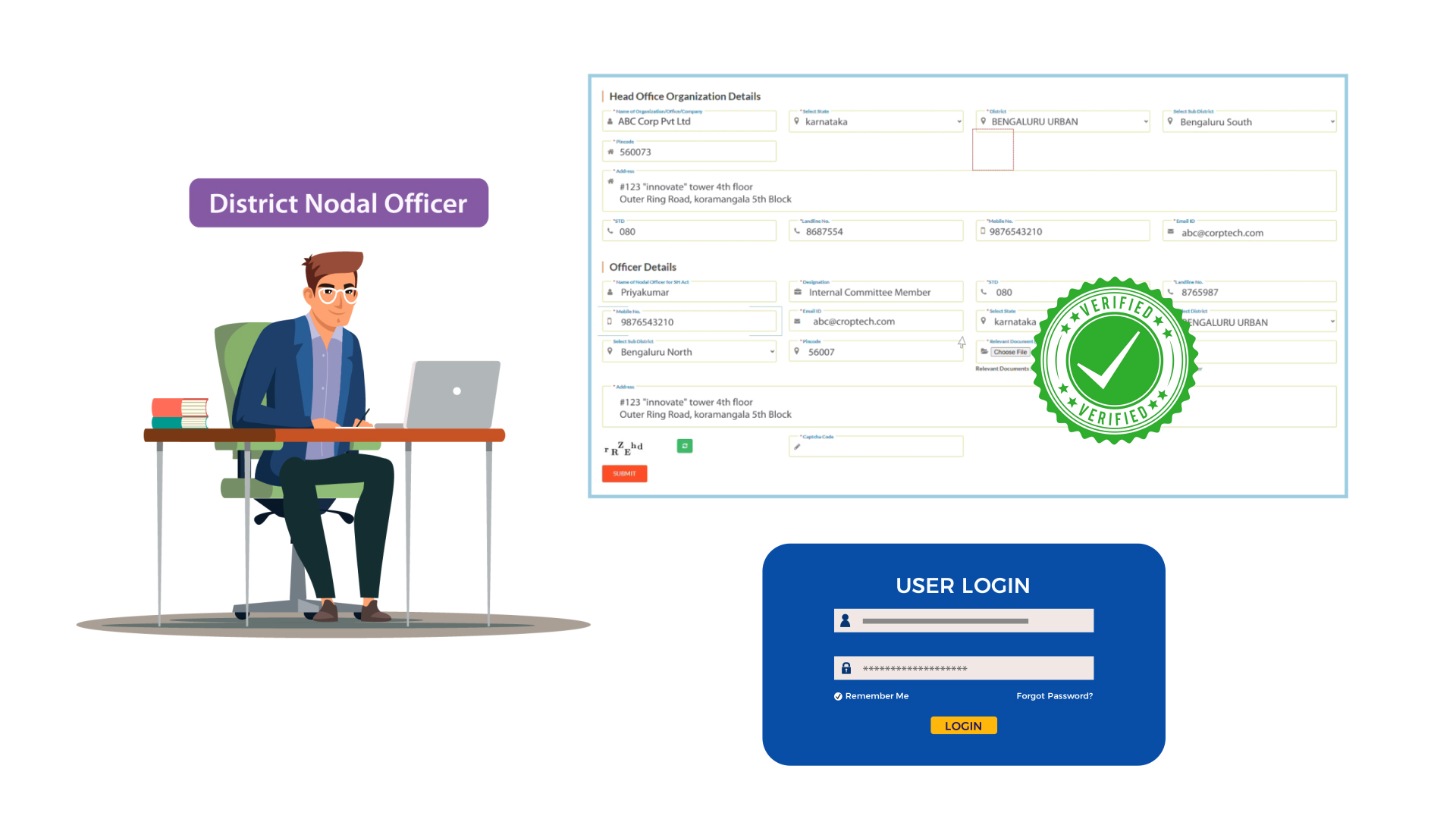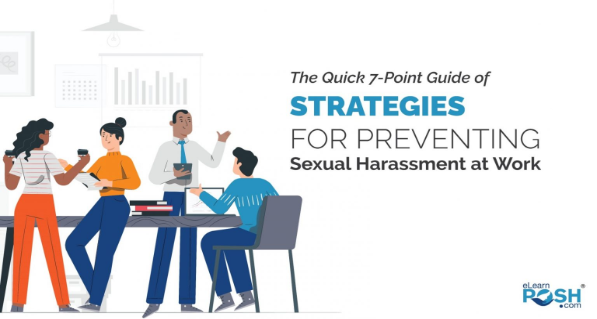
Empowering Compliance. Enabling Safer Workplaces.
1. From the Editor’s Desk- Why we say Respondent?
2. Posh Benchmarks- Supreme Court’s Latest Rulings
3. How To Handle Electronic Evidence In POSH Inquiry?
4. What Are The Powers of the Internal Committee?
6. Workplace Retaliation: What Should the IC Do?
7. Guest Article: The Silent Harassment: Retaliation After Filing a POSH Complaint
1. FROM THE EDITOR’S DESK
Why We Say “Respondent”!
About the Author
 Ms. Maya Sreenivasan
Ms. Maya Sreenivasan
Psychologist, Subject Matter Expert at eLearnPOSH.com
Maya Sreenivasan brings hands-on experience in workplace compliance, specializing in the POSH Act, 2013 and Industrial Psychology. With over 7 years of experience in advising organisations on POSH policies and training Internal Committees, she plays a critical role in shaping the content and legal accuracy of eLearnPOSH.com’s training programs.
When a POSH complaint is made against someone, the law insists on using the term respondent, not accused or harasser. That’s not just a technicality, but a deliberate choice.
“Respondent” means a person who has been named in a complaint and is yet to be heard. It avoids presumption. It acknowledges that there’s a process ahead. When we use terms like “accused” or “harasser”, we shift the tone of the inquiry toward judgement even before it begins.
While most conversations around POSH focus on the complainant, in the interest of justice, let’s take some time today to talk about the rights of the respondent.
Once a person is named in a complaint, they are not to be presumed guilty. They are to be treated with respect and dignity throughout and granted all the rights given to them by the Sexual Harassment of Women at Workplace (Prevention, Prohibition and Redressal) Act, 2013. It is mandatory for the Internal Committee (IC) to follow the principles of natural justice, which include:
- Sharing the full written complaint with the respondent
- Allowing sufficient time to respond, which is 7 working days
- Enabling and assisting in submission of evidence and witnesses
- Ensuring a neutral, unbiased hearing
The IC must be equally sensitive to the experience of the respondent as it is to the complainant. Compassion must not cloud objectivity, and organisational pressure should never override fairness.
Being named in a POSH complaint can be deeply destabilising. The fear of isolation from colleagues, damage to career and reputation, or being labelled without due process can be overwhelming.
That’s why organisations must commit to absolute neutrality, legally and culturally. This includes ensuring that both parties are shielded from gossip, social media whispers, or internal bias while the inquiry is ongoing. IC must take steps to educate the parties involved to maintain confidentiality and prevent rumours. The process must be fact-based, not rumour driven. Decisions should be made only after all sides have been heard and evidence examined.
In line with this, respondents should have access to all relevant information, be allowed to submit their side freely, and be supported emotionally where needed. This doesn’t mean the organisation takes sides. It means it creates a psychologically safe space for everyone to participate in the process without fear or intimidation.
Above all, the IC must ensure that the atmosphere of the inquiry is respectful, calm, and fair. Respondents are not to be shamed or silenced. Justice cannot come at the cost of dignity.
The use of the term “respondent” is intentional. It is a reminder that someone being named in a complaint is not the same as someone being found guilty.
2. Posh Benchmarks- Supreme Court’s Latest Rulings
Vaneeta Patnaik v. Nirmal Kanti Chakrabarti & Ors.
In this judgment the Supreme Court has made two key observations:
A. Strict limitation period for filing complaints
The Court reaffirmed that a complaint of sexual harassment must be filed within three months from the last incident. The Complaints Committee may extend this period by a further three months if sufficient cause is shown. Beyond this maximum of six months, a complaint is not maintainable.
In this case, the complaint was filed beyond six months. Both the Local Committee and the Supreme Court held it to be time-barred.
B. Unusual reputational directive
Although the complaint was dismissed for being filed late, the Supreme Court issued an unusual direction: the allegations of sexual harassment would remain on record, and the respondent Vice-Chancellor was directed to include this judgment in his resume.
eLearnPOSH believes that requiring an individual to carry a remark of sexual harassment in their resume merely based on an unadjudicated complaint may undermine the principles of natural justice. Under the POSH Act, consequences or penalties can be imposed only in accordance with the service rules or employment policies governing the individual.
Yogamaya v. State of Kerala
In this case, the Supreme Court upheld the Kerala High Court’s ruling that political parties are not covered by the POSH Act. The Court noted that:
- Joining a political party is not an employment relationship.
- It does not create an employer–employee contract.
- A political party is therefore not a “workplace” under the Act.
eLearnPOSH views that if a political party engages regular staff, such as receptionists, clerical personnel, IT and social media teams, drivers, housekeeping staff, event managers or other salaried employees, and the number of such employees exceeds 10, the party is required to constitute an Internal Committee for those employees. The complaints against these employees by the visitor (even a grassroot worker of the party), even though they may not have an employee – employer relationship, the case must be handled by Internal committee.
3. How to handle electronic evidence in POSH inquiry?
eLearnPOSH featured a new podcast episode on the admissibility of electronic evidence in POSH inquiries, explaining how Internal Committees can evaluate digital proof like screenshots, chats, and recordings using the Bharatiya Sakshya Adhiniyam and Evidence Act for guidance.
4. What Are The Powers Of The Internal Committee?
eLearnPOSH has published a new blog titled ‘Role and Powers of the Internal Committee under POSH: A Complete Guide.’ It explains the authority and responsibilities of Internal Committees, including how they handle complaints, extend filing timelines, assess if allegations qualify as sexual harassment, facilitate conciliation, summon evidence and witnesses, recommend interim reliefs, and ensure fair inquiries based on natural justice. The post also discusses key court rulings that shape IC powers and offers practical guidance for organisations to run compliant and credible POSH inquiries.
5. SHe- Box Unboxed

1. Who is the Nodal Officer?
As part of the SHe-Box registration process, the portal requires each organisation to designate a Nodal Officer for its head office and every branch office. This person serves as the organisation’s point of contact for submitting and managing Internal Committee (IC) details on the portal.
2. Who can be designated as the Nodal Officer?
As of now there is no detailed eligibility criteria prescribed under the SHe-Box framework for appointing a Nodal Officer. However, as a good practice, the Nodal Officer should ideally be:
- A senior employee who is aware of the organisation’s POSH framework and processes.
- Trustworthy and capable of coordinating between the Internal Committee (IC) and the District Officer or other authorities, as needed.
- Familiar with the organisation’s compliance obligations and able to maintain confidentiality.
3. What are the responsibilities of the Nodal Officer?
The designated Nodal Officer is responsible for:
- Register the workplace and Internal Committee (IC) details on the SHe-Box portal and update them whenever changes occur.
- Coordinate with the District Nodal Officer (DNO) to complete verification and approval steps.
- Ensure that the Chairperson of the IC receives access credentials after approval.
- Track the status of complaints to confirm timely resolution in line with the POSH Act, 2013.
- Upload annual reports on the portal, including the number of cases filed, actions taken, and current complaint status, ensuring transparency and accountability.
- Update information about sensitization workshops and training sessions held for employees and IC members to promote awareness about the Act and the portal.
4. Can the Nodal Officer and an Internal Committee (IC) member be the same person?
The Nodal Officer designated during SHe-Box registration cannot be the Presiding Officer (Chairperson) or the External Member of the Internal Committee (IC). However, the Nodal Officer can be any other member of the IC, as long as they do not hold either of those two roles.
This separation ensures that login credentials are securely issued to the Chairperson and that the External Member remains independent. Assigning a separate individual helps maintain clarity and accountability in the registration and complaint-handling process.
5. Are a Nodal Officer and a District Nodal Officer (DNO) the same under SHe- Box?
No. A Nodal Officer is an internal representative appointed by an organization. Whereas a District Nodal Officer (DNO) on the She-Box portal is a government official at the district level who verifies the registration of the Head Office Nodal Officer (NO) of an organization. This DNO ensures that the initial organization registration is done properly and also approves individual organizations’ registration. The DNO plays a supervisory role, overseeing the registration process and ensuring compliance within their assigned district.
6. Workplace Retaliation: What should IC Do?
Scenario: Change in Work Allocation Following a Complaint
After submitting a complaint, the employee informs the Internal Committee that her reporting manager, who is not the respondent, has reassigned her to less important tasks and excluded her from team meetings. She feels this may be in response to her complaint.
The manager explains that the changes were part of a broader team restructuring and are not connected to the complaint.

What is the appropriate course of action?
A. Take no further action, as the change is not directly linked to the original complaint
B. Direct HR to reinstate the complainant’s earlier responsibilities
C. Treat this as a separate concern and examine whether the changes constitute retaliatory action
D. Postpone action until the primary inquiry concludes
Recommended Approach: Option (C)
Any adverse treatment following a complaint, whether direct or indirect, may undermine the integrity of the inquiry process. The Internal Committee should assess whether the actions are retaliatory in nature and, if necessary, recommend interim measures to ensure the complainant’s work environment remains fair and non-discriminatory.
7. GUEST ARTICLE
The Silent Harassment: Retaliation After Filing a POSH Complaint
 About the Author
About the Author
Adv. Sonali Satpathy is a Civil, Criminal & Corporate Lawyer, Legal Compliance Advisor, POSH & POCSO Expert, Mediator, Speaker, and Thought Leader. With over 9 years of diverse legal and entrepreneurial experience, she serves as an External Member for several organizations, guiding compliance while shaping safer and more inclusive workplace cultures. Her initiative #ConceptOfGrey reflects her continuous work in addressing overlooked nuances of workplace behaviour and compliance. Through her sessions, she empowers individuals, IC members, and employers to embrace respect, time discipline, and body language awareness. Honoured as a “Woman Face of the Year 2024,” she remains committed to building workplaces rooted in dignity and trust.
Filing a sexual harassment complaint under POSH is often seen as a courageous step toward justice. But for many survivors, the real struggle begins only after the complaint is filed. Retaliation, subtle or direct, is a silent form of harassment that rarely makes it to official reports but deeply damages dignity and trust.
Unlike overt harassment, retaliation is not always visible. It may not look like termination or demotion. Instead, it often comes disguised as exclusion from meetings, loss of key assignments, social isolation, or being quietly erased from opportunities. These “grey zone” responses create a hostile environment where the survivor is punished for speaking up, and others are silently warned not to do the same.
What makes retaliation particularly harmful is its invisibility. Policies may cover “no retaliation,” but unless organizations actively monitor workplace culture, these behaviors slip through the cracks. The result? Survivors withdraw, IC members feel ineffective, and the spirit of POSH is lost.
As External Members, IC members, and leaders, we need to recognize retaliation as a second layer of harassment. It is not just a compliance issue but a cultural one. Addressing it requires more than policies, it requires trust-building, anonymous reporting mechanisms, regular feedback loops, and strong accountability for retaliatory conduct.
POSH is not just about preventing harassment; it’s about ensuring that the process of justice itself does not become another form of victimization. Until workplaces recognize and address retaliation, true compliance will remain incomplete.
Best Practices to Address Retaliation
- Clear Anti-Retaliation Policy- Explicitly mention in the POSH policy that retaliation, in any form (direct or indirect, subtle or obvious), will not be tolerated. Define examples such as exclusion, denial of opportunities, gossip, or hostile work environments.
- Confidentiality Assurance- Ensure that complaint details are shared strictly on a need-to-know basis. Protecting the survivor’s identity reduces the chances of targeted backlash.
- Training IC & Leaders to Spot Retaliation- Equip Internal Committee members, managers and leaders to recognize subtle retaliation signals, like sudden project changes, isolation, or performance reviews shifting post-complaint.
- Anonymous Feedback & Cultural Pulse Checks- Conduct periodic anonymous surveys or feedback sessions to identify if complainants or witnesses feel sidelined or unsafe post-complaint.
- Whistleblower-Style Protection- Extend protection not only to the complainant but also to witnesses and supporters, similar to whistleblower frameworks. This prevents isolation of those who stand by survivors.
- Strict Accountability for Retaliators- Create a mechanism where any retaliation is swiftly investigated and punished with proportionate disciplinary action, sending a clear deterrent message.
- Support Systems for Complainants- Provide access to counselling, mentoring, or peer support groups to help survivors cope with the emotional and professional fallout of complaints.
- Monitoring Career Progress Post-Complaint- Track promotions, appraisals and project allocations of complainants for at least 6–12 months post-complaint to ensure no silent penalisation is happening.
- Leadership Commitment & Tone at the Top- When leaders openly reinforce that reporting is valued, not punished, it builds trust. Regular communication from leadership reduces fear and stigma.




Leave a Reply